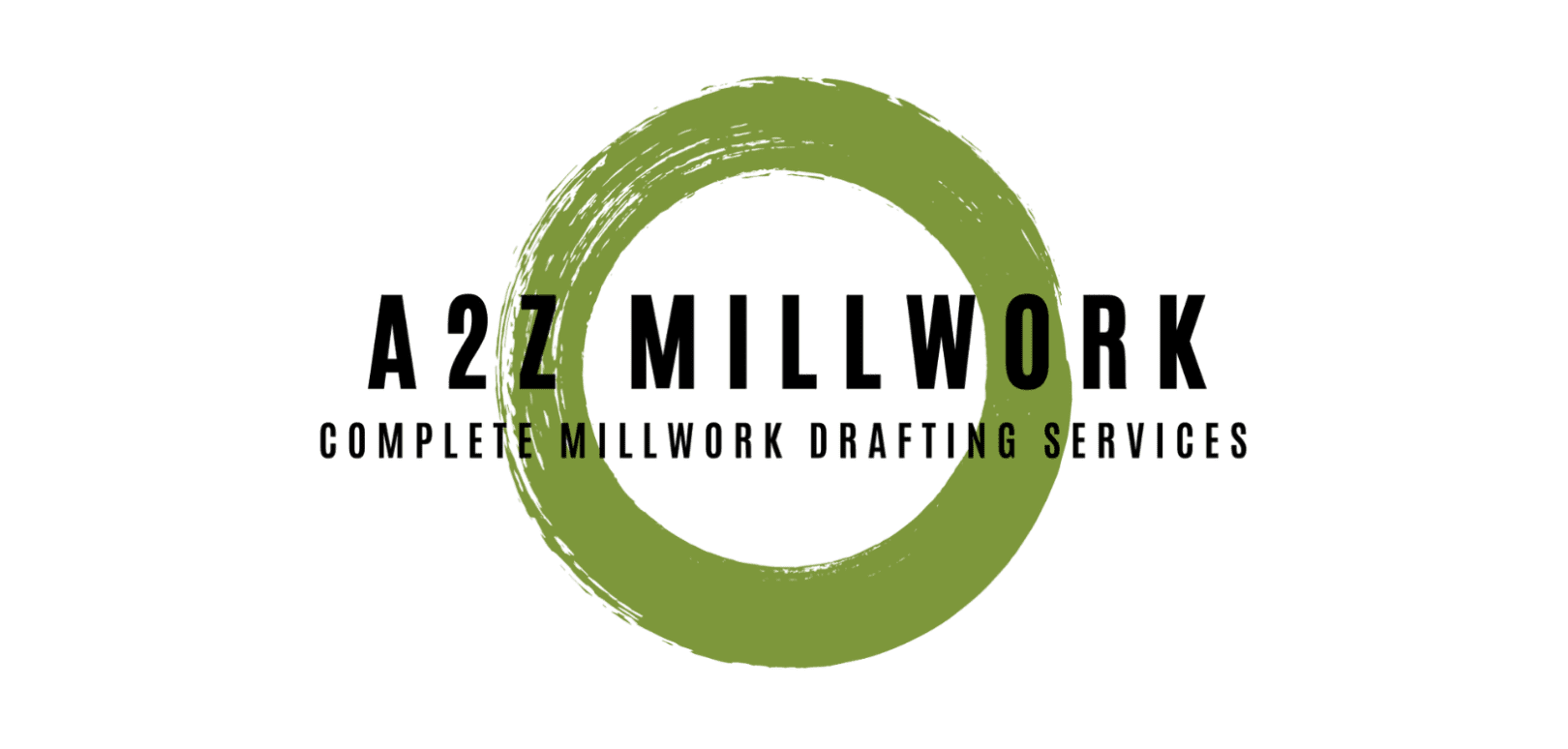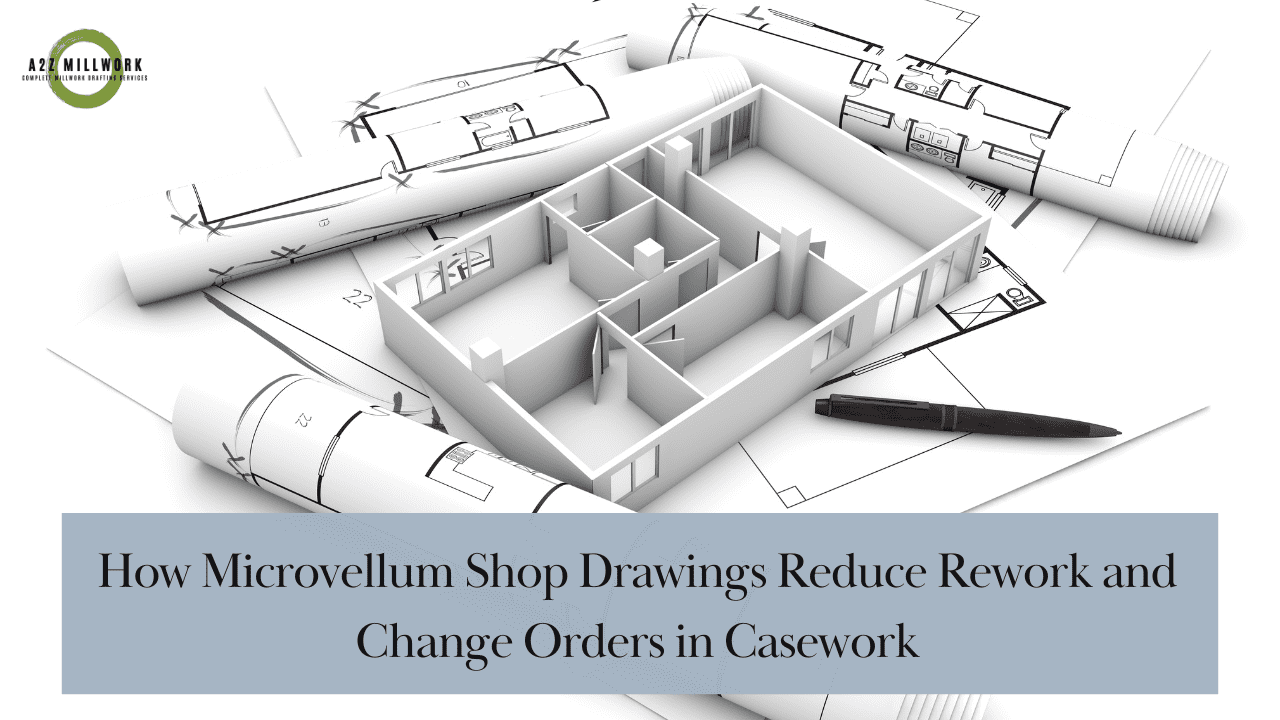Introduction: The Cost of Inaccuracy in Casework Projects
In the world of architectural casework, precision is non-negotiable. Errors in shop drawings lead to rework, change orders, missed deadlines, and significant budget overruns. According to data from McKinsey, construction rework can consume up to 30% of project time and 5%–10% of the overall cost. The root of many of these issues? Inaccurate or poorly coordinated shop drawings. This is where Microvellum shop drawings prove invaluable.
Microvellum, a CAD/CAM-based platform built on AutoCAD, is revolutionizing how the U.S. woodworking and millwork industries handle drafting, engineering, and production. By enabling smarter, data-rich shop drawings, Microvellum dramatically reduces rework and change orders—especially in high-stakes commercial and institutional casework projects.
Understanding Microvellum Shop Drawings
Microvellum shop drawings are not your average AutoCAD sketches. They are:
- Parametric, meaning dimensions can be updated in real time.
- Manufacturing-ready, linked to CNC machines.
- Data-integrated, with parts lists, materials, and hardware.
- Highly customizable, for project-specific needs.
These shop drawings serve as the blueprint for manufacturing and installation, removing ambiguity from the process. In the U.S. construction industry—especially with large-scale millwork contracts—clear, precise drawings are the best defense against costly mistakes.
Key Reasons Why Microvellum Reduces Rework and Change Orders
1. Parametric Design Minimizes Manual Revisions
Traditional CAD files require manual editing, increasing human error. With Microvellum, changes to one part of the casework (e.g., shelf depth) automatically cascade through related parts—like end panels and hardware placement.
This parametric control reduces:
- Dimensional inconsistencies
- Misaligned parts
- Human oversight in large projects
2. Direct-to-CNC Workflow Avoids Fabrication Errors
Microvellum generates machine-ready code directly from the shop drawings. No third-party post-processing is needed, and no manual g-code programming.
The benefits:
- Zero transcription errors
- Faster turnaround from design to production
- Tighter tolerances and consistency in output
3. Integrated Materials & Hardware Libraries Ensure Compatibility
With access to thousands of pre-configured materials (MDF, hardwood, plywood) and hardware (Blum, Hafele, etc.), designers select components that are pre-approved and spec-accurate. This avoids last-minute field changes due to unavailable or incompatible parts.
Additionally:
- Automatic part numbers and spec sheets are generated
- BOMs are accurate and reduce procurement errors
4. Built-In Validation Tools Catch Errors Early
Microvellum includes:
- Clash detection
- Clearance analysis
- Wall condition simulation
These tools allow drafters to pre-test build conditions in a virtual environment before sending drawings to approval or production.
Real-World Example: Preventing Errors Before They Happen
A millwork manufacturer in Texas used Microvellum to produce over 800 cabinets for a large university dormitory. Their original workflow involved hand-modifying AutoCAD blocks and manual CNC inputs.
After shifting to Microvellum:
- Change orders dropped by 60%
- CNC output error rate reduced to under 2%
- Lead time shortened by 25%
This wasn’t just a tech upgrade—it was a shift in operational efficiency.
Best Practices for Maximizing Microvellum’s Benefits
✔ Invest in Custom Libraries
Create project-specific libraries of parts and finishes to avoid redesigning frequently used items.
✔ Standardize Drafting Templates
Align Microvellum output with client submittal standards (e.g., AIA layers, viewport scaling, revision clouds).
✔ Leverage Nested Reports
Use advanced nesting and optimization to reduce panel waste, saving money and reducing environmental impact.
✔ Train Your Team
The ROI of Microvellum depends on proper implementation. Continuous training ensures drafters and engineers fully leverage its capabilities.
Why U.S. Casework Manufacturers Are Adopting Microvellum
Across the USA, from commercial millwork contractors in New York to custom cabinet shops in California, Microvellum adoption is on the rise. What’s driving this?
- Labor Shortage Mitigation: Automates drafting and engineering steps
- High-Volume Production: Ideal for K-12 schools, healthcare facilities, and retail rollouts
- Compliance Ready: Helps meet AWI, LEED, and ADA compliance through intelligent metadata tagging
The key is that Microvellum bridges the gap between drafting, design, and production—creating a streamlined, scalable, and error-resistant workflow.
A2Z Millwork Design LLC: Your Expert in Microvellum Drafting
For millwork firms looking to unlock the full potential of Microvellum, A2Z Millwork Design LLC is the go-to partner. Specializing in custom Microvellum shop drawings for the U.S. market, A2Z provides:
- Turnkey drafting services
- Microvellum customization
- Nesting optimization
- Elevation and section views tailored to client standards
With a deep understanding of architectural casework, AWI standards, and CNC manufacturing, A2Z reduces the risk of costly revisions and helps clients hit aggressive timelines without compromising on quality.
Conclusion: Draft Smart, Build Smarter
In a competitive market where every minute and dollar count, rework and change orders can derail your project and hurt your bottom line. Microvellum shop drawings act as your first line of defense—ensuring accuracy, clarity, and compatibility across every stage of your casework project.
By embracing this technology and collaborating with an experienced partner like A2Z Millwork Design LLC, your projects will benefit from:
- Fewer surprises
- Lower costs
- Faster installation
Precision starts at the drafting table. And with Microvellum and A2Z, that precision is built into every joint, panel, and hardware hole—before the first cut is even made.



